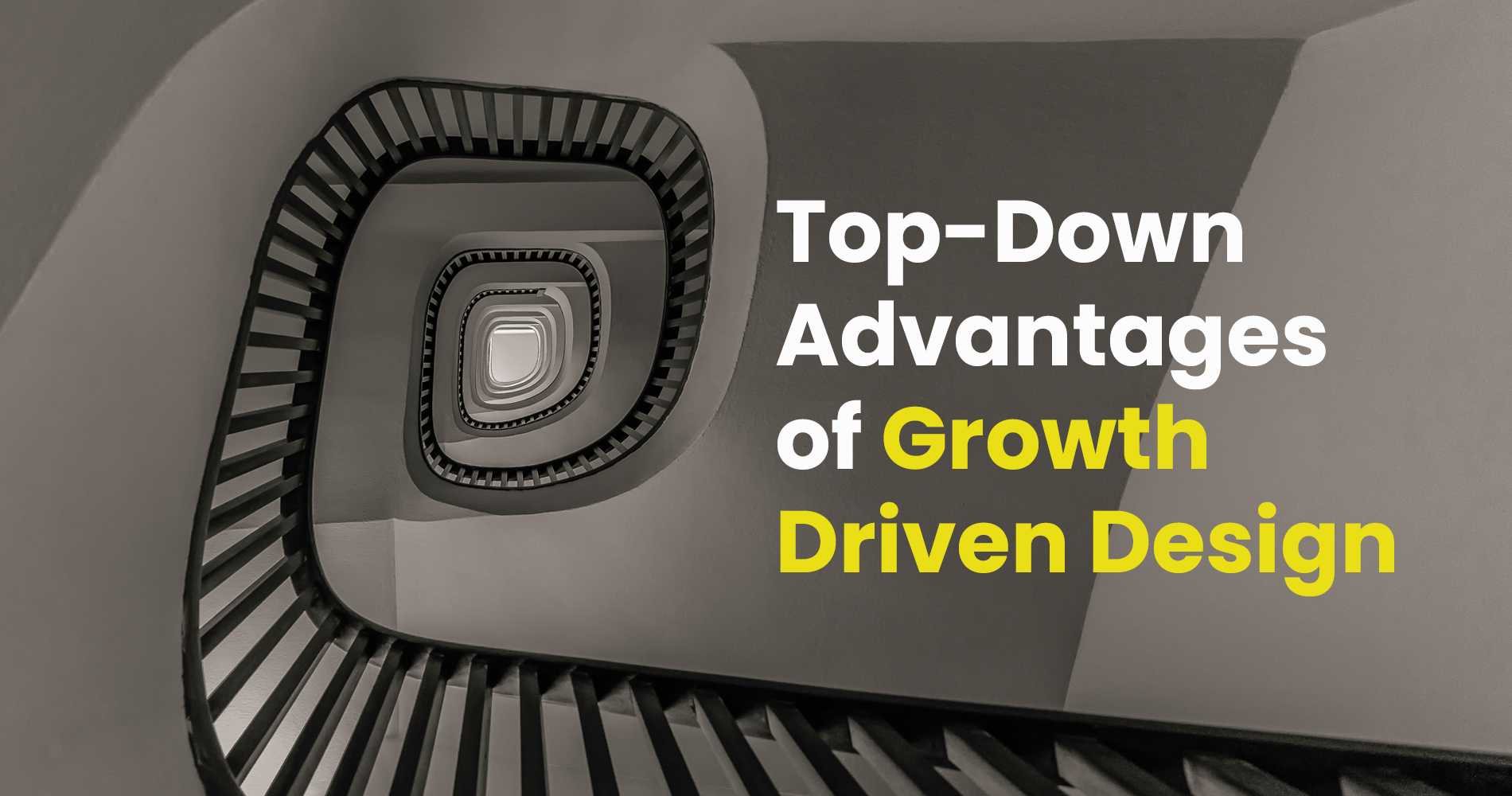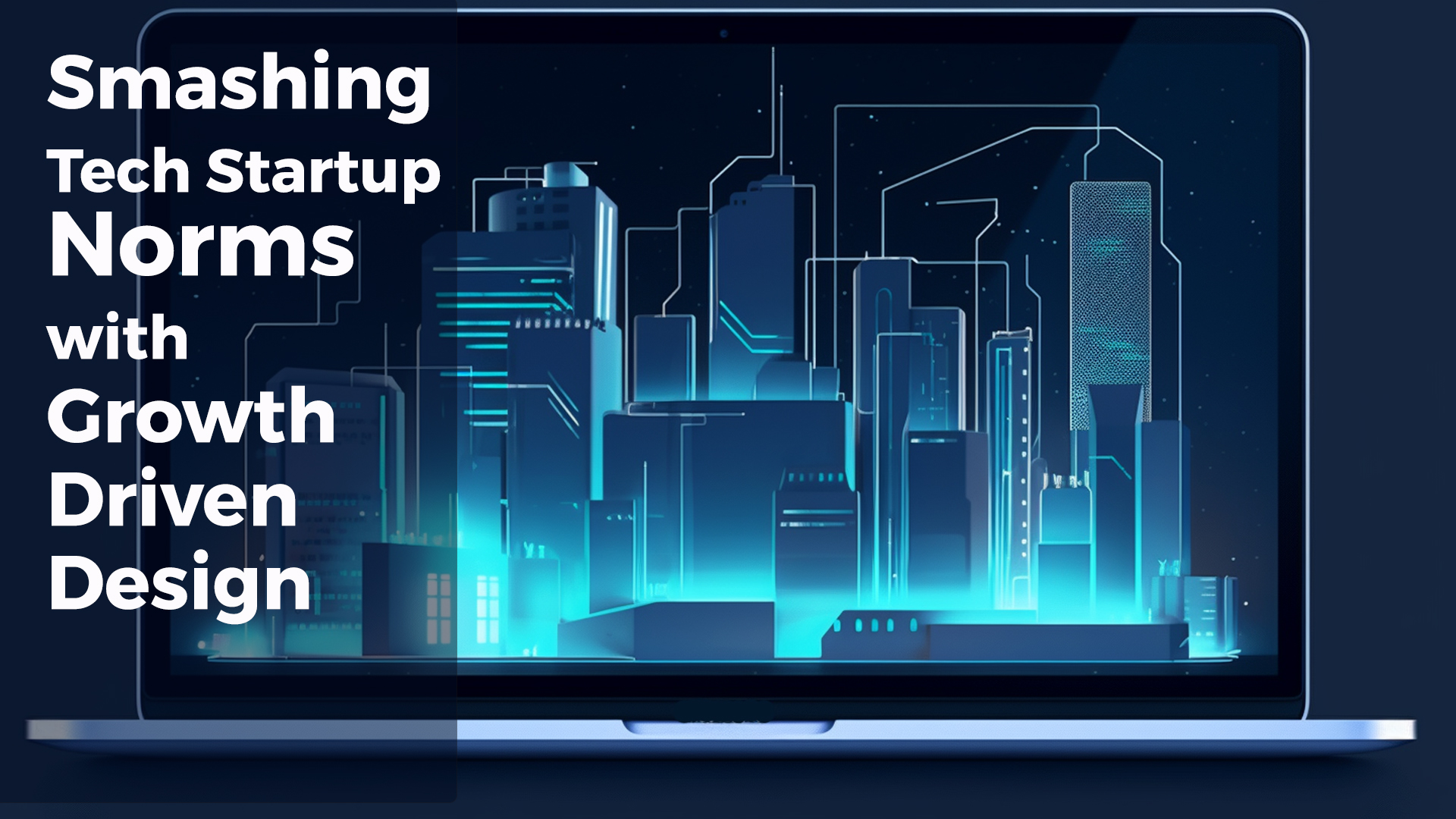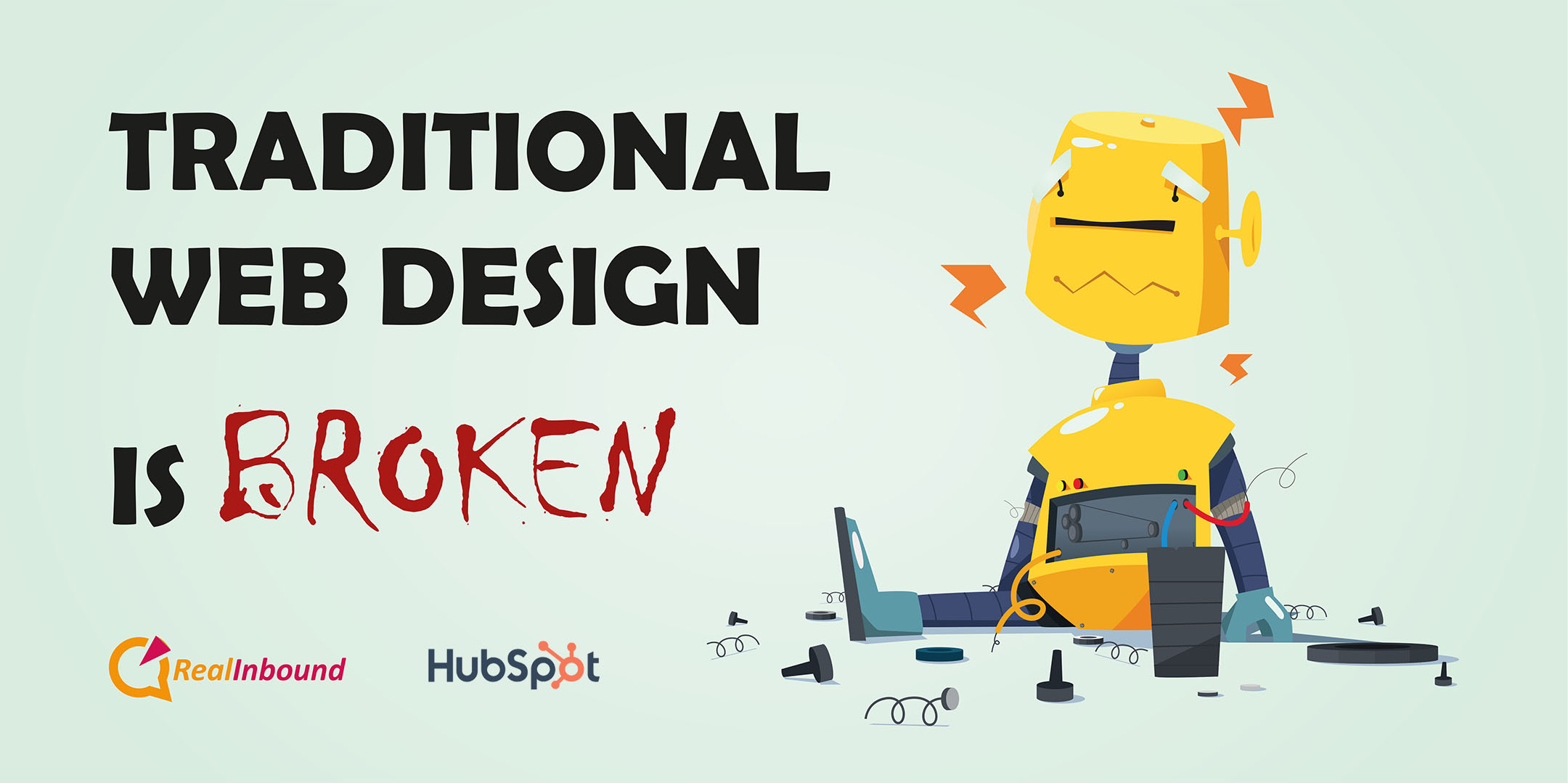If you remember the last time you needed a new website design, you most likely recall how disappointing and frustrating the processes was. Probably you will recollect that the framework design stage took an age and the content creation even longer. The whole process was such a tremendous investment in time, finances, and resources that at the conclusion you couldn't wait to move on with something else. Enter stage left... Growth Driven Design!
We are confident that as soon as your website went live, you moved forward and concentrated on other marketing and sales strategies and thought no more about the website.... well, for at least 2 years or so.
However, the stark reality is that your website is probably THE most important "live" assets. What do I mean by "Live"? Your website is (or should be) your company's primary channel. Allowing you to process and harvest data 24/7, 365 days a year.
The BIG question is... has this traditional approach to website design helped maximise your business growth?
So, What Is This Growth Driven Design?
Your business website is your principal asset in your marketing strategy. If we think about the typical online buyers’ journey, you will notice that your website is at the centre of each stage, awareness, consideration, and decision. What that means is your website is exactly where your potential customers are learning and evaluating options. Don't forget, it's also where they take the final step to purchase.
Even if your sales team have been in direct contact with a prospect, your website is more than 70% of the conversion process. So, is your website evolving to meet your client's needs? Is it sufficient to only modify your site every 2 to 3 years? Is it therefore fair to consider that traditional redesign doesn't accommodate the continuous changes in buying habits?
Given that your website is your most important channel of conversion, its design and development must certainly be an integral part of your continued marketing and sales strategy. It needs to be an agile and versatile process. Your website has got to be central to your Growth Marketing strategy and adaptive depending on your buyer personas’ changing needs.
Consequently, rather than waiting for years to design and develop your website, it is vital that you initially launch with the most indispensable elements and then make revisions in an iterative way. This Growth Driven Design method empowers you to supercharge your online conversions, which is the reason why it needs to be dynamic and adaptable as you test and analyse performance.
But how can Growth Driven Design (GDD) help your business grow?
GDD is a web development strategy that enables enhancements and modifications without the need to commit large amounts of time and money to improve the website. The concept is that you concentrate on elements of your website, analysing performance and developing improvements in real time.
If certain aspects or pages performance is sub optimal. A / B testing can be performed to help deploy the proper changes. When buying trends vary you can fine-tune design to stimulate the growth of visits and conversions. In a nutshell, this approach enables you to adapt to the marketing and sales goals, implementing a strategic redesign, launch and optimisation.
What does the GDD process look like?
Growth Driven Design is a monthly commitment that yields greater business growth because it integrates measurement and optimisation more effectively, which magnifies the performance of your business website and its components. In contrast to the traditional design, GDD has three crucial phases:
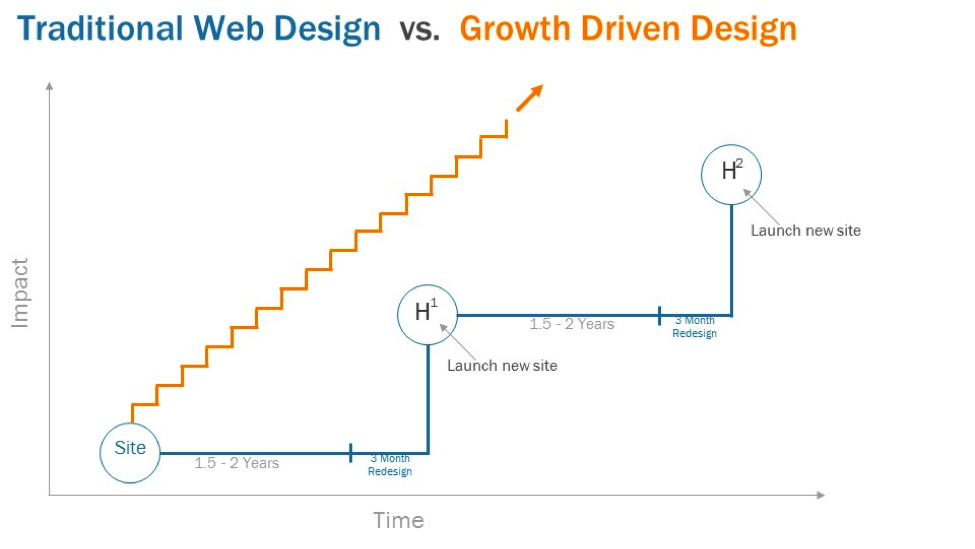
1 Growth Strategy
An effective website begins with a Growth Strategy. Its aim is to resolve web design problems taking into consideration the main target audience and their buyer’s journey.
Therefore, the starting point in this phase is to develop the buyer personas profiles that will form the foundation for all future strategies.
Next, we look to determine SMART objectives dependent on historical data and the demands of marketing and sales objectives. With evident and quantifiable objectives, it's possible to recommend a design centred on achieving results.
Step three in this strategic phase is to build a wish list organised into options, for instance a feasible implementation plan for initial activities that are adaptive and can be modified as new data is collected and analysed.
2 Launch pad
When growth strategy is complete, you'll want to begin designing and building a "launch pad" website that, while not perfect, serves as a starting point to action enhancements as soon as sufficient data has been accumulated from visitors.
This launch pad solution typifies a saving in time and resources which is going to be better utilised at a later point and enables you to launch you a web in time. Nevertheless, whilst the trend is to undertake a fast launch, speed must never compromise value to the visitor’s experience.
In the standard web design process, the launch is the conclusion of the venture. In this situation, it is the beginning, with crucial components according to the main objectives, and considering the suggestions from the implementation plan that will have the biggest impact. In essence, prioritising the website "must haves" that will result in increased conversions, and holding back on the non-essential ones for subsequent optimisation.
3 Continuous Improvement
When launched you will begin the process of accumulating data on users’ behaviour. Their interaction with your pages will enable you to understand what genuinely interests them and which of the initial presumptions and suggestions were correct. By doing this you're going to have an idea of what to improve to affect the site performance. You'll need to decide which are the most important changes to make month to month when entering this optimisation phase.
Conclusion
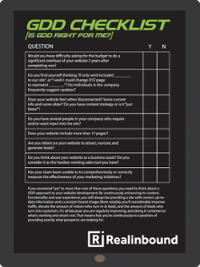 Your website is for your visitors. The purpose of your website is to resolve challenges for prospects and customers who visit and eventually make them return for more.
Your website is for your visitors. The purpose of your website is to resolve challenges for prospects and customers who visit and eventually make them return for more.
The modifications made to a website ought to be results-driven. Growth-driven design does not fail under presumption or speculation; it’s founded on data, engagement and learning.


